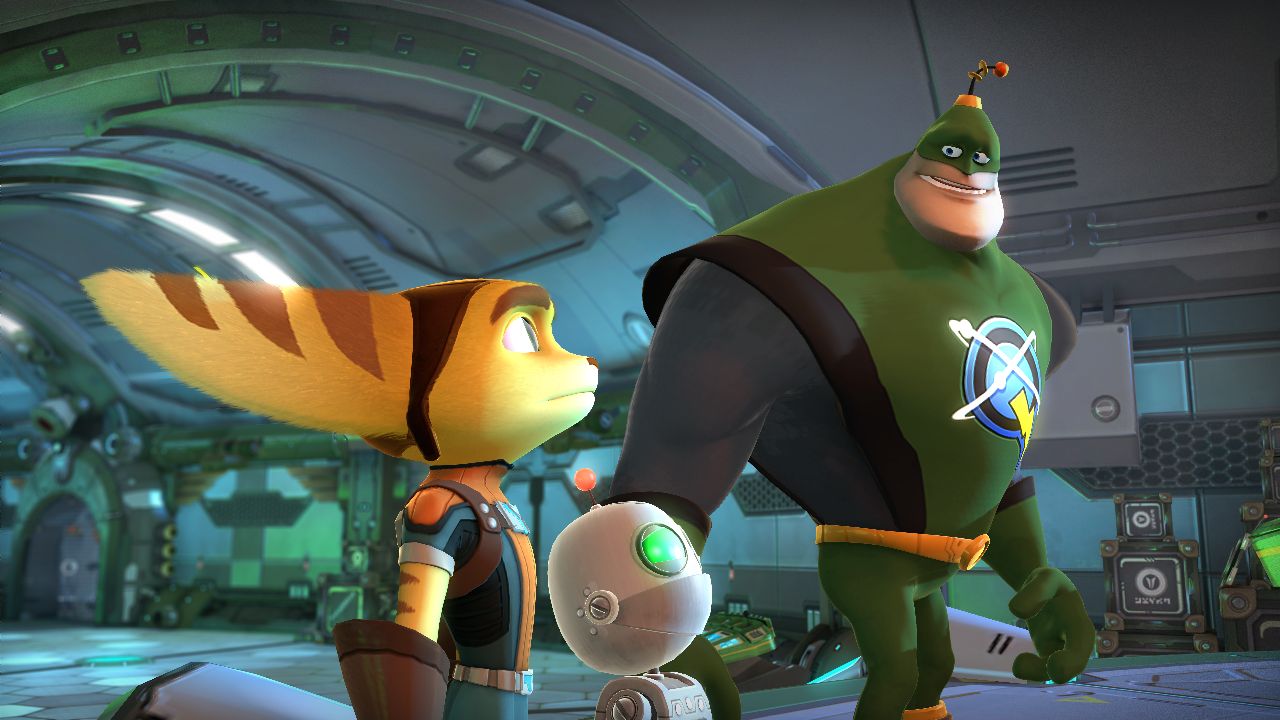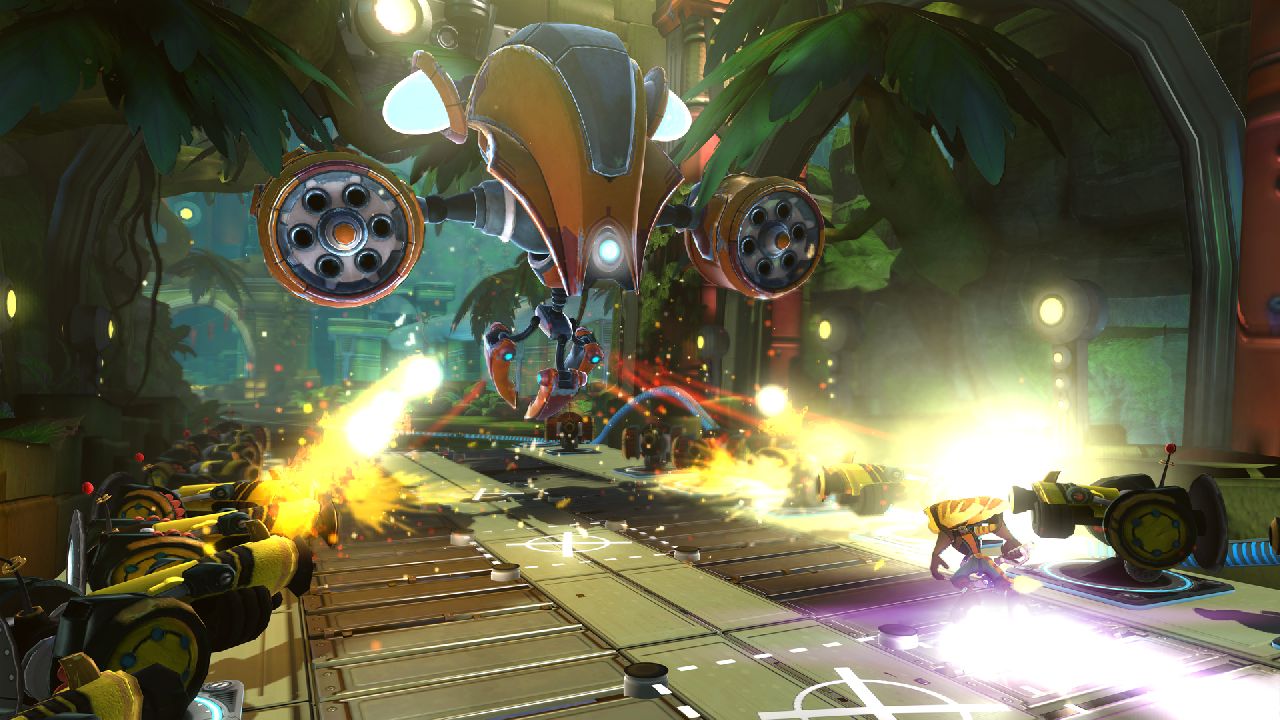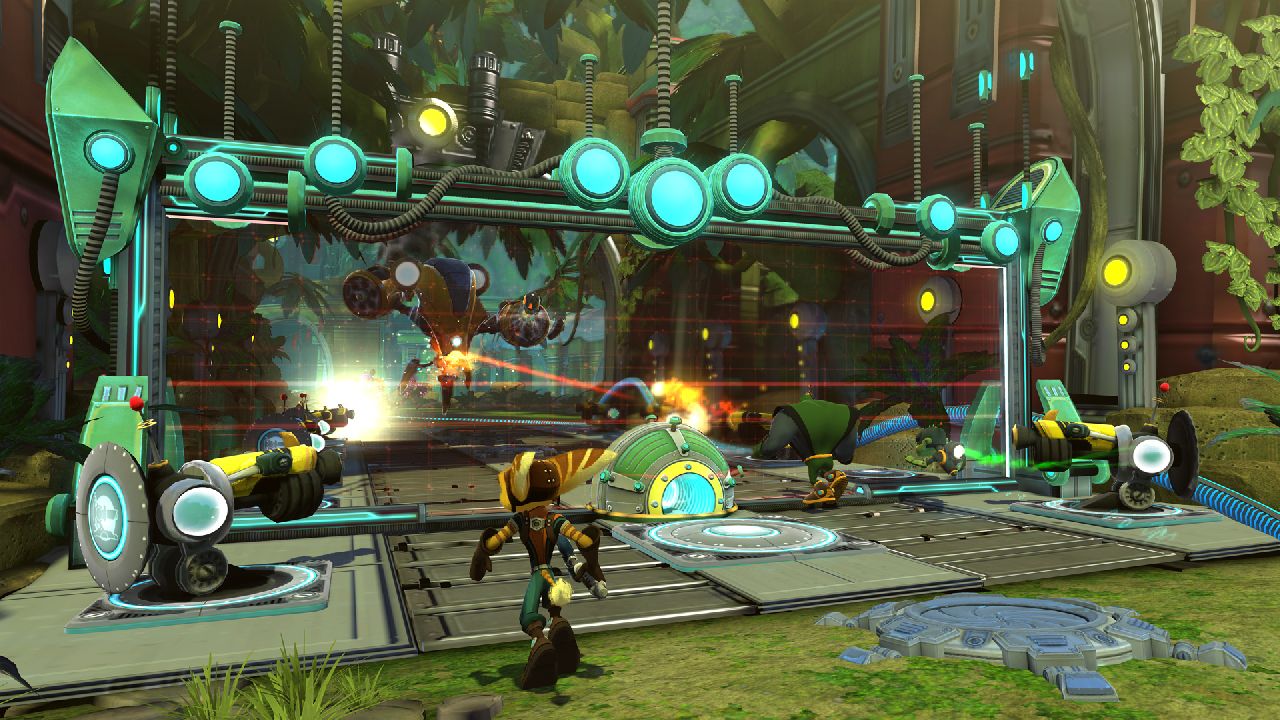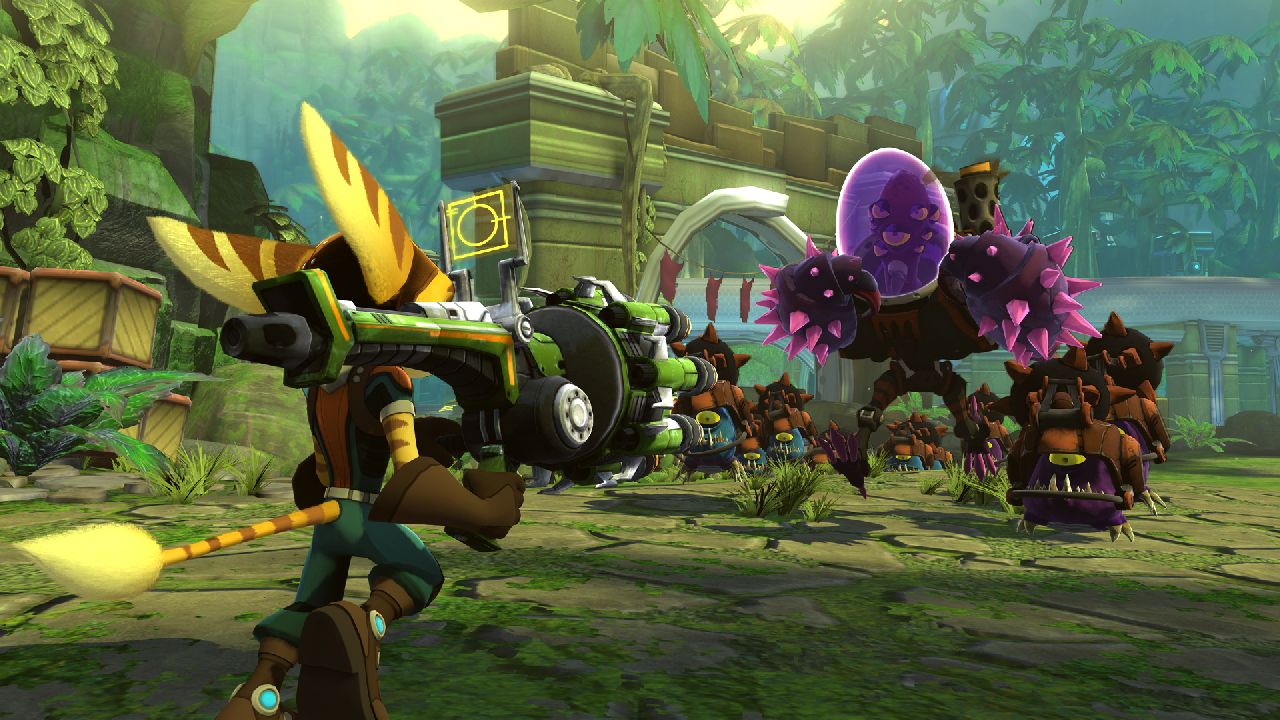Ratchet & Clank: Full Frontal Assault Review
Unengaging tower defence that needs to be played cooperatively
The Ratchet & Clank series has been somewhat unpredictable in recent years as it seems to be trying to reinvent itself with the last few games despite a strong following and decent review scores. Its blend of planetary exploration, platforming and fantastically fun weaponry was a hit every time, culminating in the excellent A Crack in Time in 2009.
In 2011, the series delved into co-op gameplay and despite dumbing down the controls to remove manual aiming and allow all players to share a single screen, the game was an enjoyable blast with the usual polish we’ve come to expect from the series. It was surprising to hear the studio was working on yet another R&C title after announcing the multi-platform Fuse. We were hoping for something along the lines of A Crack in Time again, but alas we have a PSN tower-defence download title. Wait... what?

Multiplayer is still a large focus, but the main meat of the game is - I’ll say it again - tower-defence. In the campaign, you face the short challenge of defending generators at your base over five stages while trying to retake enemy territory. The enemy will often send waves of troops to attack your base. This provides gameplay that can often leave you feeling stretched, as you need to make your way across large maps to blow up an enemy base or activate a console, while being mindful of your own base being invaded.
With the bolts acquired from crates or enemies, you can buy base defences. These include various types of mines and turrets to ease the burden of fending off a mix of robotic and squishy hoards. Walled barriers are available too and can be upgraded with electricity later on. The AI, while sometimes a bit dim (stop humping that rock!), are relentlessly vicious and will keenly target your defences to aid their assault. Barriers only hold them back for so long and balancing your funds against pricey defences can often be a frustrating experience, especially when you think back to how much fun you had in the other games. Resource management has no place here, I tell you!

Ratchet’s weapons are familiar ones from the series and are reliably excellent to wield, offering vital feedback as you work out which ones work best against different enemy types. At the start of each level, you must unlock each weapon from scattered pods around the map and sometimes you will be left with duff choices, which can be exasperating when you’ve gambled on which distant pod to trek to, when you only really have time to get a few before the main enemy assault begins.
By the fourth level, I was getting overwhelmed with the final assaults as options became grimly narrow as I tried to defend the base on my own. As somebody that regularly 100%s the Ratchet games, I can’t help but feel that Insomniac have let the focus of the game slide too far in the wrong direction.
Co-op aims to keep you from abandoning the game and I’d advise you to check out either the local splitscreen or online options. This makes your workload much less chaotic, although there’s a large flaw. You can only go online with people on your friends list, as there are no options for matchmaking with anyone else. That’ll be why every time I played the competitive multiplayer I was flooded with friend requests.
The competitive multiplayer does feature matchmaking options thankfully, although I’m not sure how long the game is going to have an active audience, such is the lack of variety on offer. 1vs1, 2vs2 or party 2vs2 options are available and at least feature different maps to the campaign. They’re more arena-based with capturable nodes to obtain around the edge of the stage with a few in the middle too.

The objective is to destroy the other team’s generators, but things are prolonged by the match being broken up into three looped stages of action. The recon round has players capturing nodes to fund defences and troops. This lasts for a few minutes, with players able to steal nodes from each before the time runs out and the nodes are then locked until next time.
Players then fall back to their base and use the bolts to buy AI troops to help them out in the assault. Once the big bolts start rolling in you can upgrade health, ammo and AI classes too although you’ll want to make sure you’ve left some cash for base defences too. When the time for this section runs out it’s time for the assault.

Your AI bots will attack the opposition base while you and your partner try to back them up, or use them as a distraction to sneak in destroy the generators for the win. Naturally, the other team will be trying to do the same or staying back to defend their base. Sometimes you’ll find teams going all out or going for a one at home one on attack plan.
Stalemates can go on for ages, but can suddenly end when you manage to break defences after exploiting a gap in their lines. While undeniably gratifying when you pull off a win, there’s not much desire to do it again straight away, as there’s a heavy feeling that it’s all going to be a bit samey. There aren’t even any deathmatch or team deathmatch modes to fall back on.
We couldn’t try out the cross-play functions with the free PS Vita version, as it’s not ready yet, begging the question why they didn’t delay the whole thing?
 Comments
Comments
















